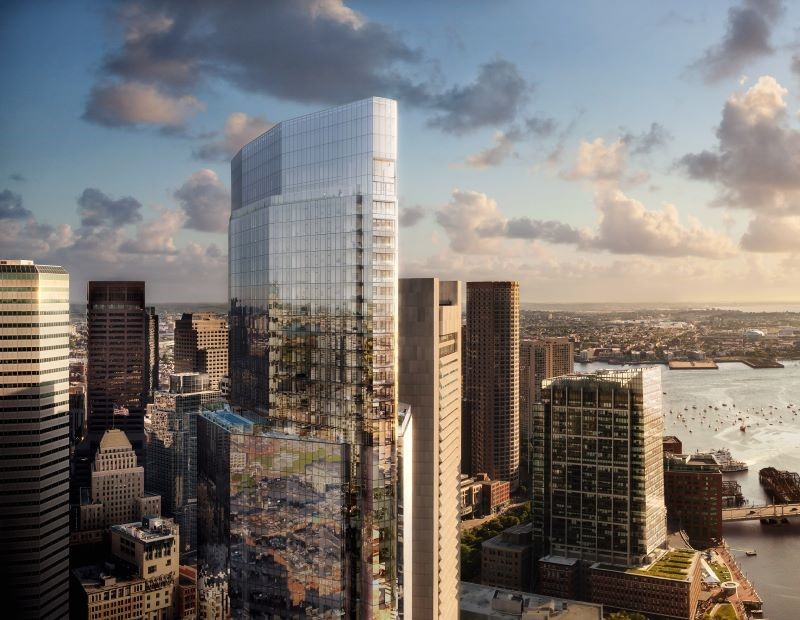The Future of Office: Is CRE Out of Touch?
Offices are still necessary, but who will use them and why? An analysis from Paul Fiorilla, Yardi Matrix research director.

Paul Fiorilla, Director of Research, Yardi Matrix
One hears much talk in commercial real estate industry circles, at CRE events, about the benefits of in-person office work. How young people want to go back to the office to make connections, collaborate and get mentored; how people are tired of Zoom meetings or working in their pajamas, etc.
Outside the industry, however, I don’t know many people who want to commute regularly and go back to the office unless they absolutely must. Everyone I’ve met whose jobs permanently change to mostly or fully remote are without exception happy.
Few young workers I’ve encountered think of their careers in terms of mentorship and long-term arcs. They’re mostly focused on their immediate work conditions and pay. For most of those raised in the Internet era, working on their laptops at home is a feature, not a bug. And given the shortage of skilled young workers and difficulty companies have preventing valuable employees from being poached, companies have no choice but to accommodate their desires while raising pay and benefits.
The New York Times recently published a much-discussed article about corporate culture and why its interview subjects dislike the social aspects of working in an office. The article in my view self-selected an unrepresentative sampling of introverts and vastly overstated the social objections to office culture. Clearly, however, office workers of all ages prefer scheduling flexibility, avoiding the energy-suck of the daily commute, and achieving a better home-life balance.
Why so optimistic?
There could be many reasons why the CRE industry may be out of touch with my anecdotal experience. One possibility is that my experience is not representative. I could be wrong. Excluding that, my best guess is a “talking your book” phenomenon. Individuals whose business is selling commercial space naturally want to promote the benefits and necessity of office space.
Another explanation for excess exuberance could be that the pessimistic scenario is disheartening. A sharp drop in demand for offices creates many negative implications for the industry. It’s hard to come to terms with the potential for lower profits, less demand, the need to remodel and/or redevelop office buildings, less new development, and so on. Much easier to believe that things will work out with minimal disruption.
The nature of our jobs might also play a role. The value of office work varies depending on the type of industry. Meeting in person and collaborating with teams is more valuable in finance and real estate than other office-using tasks such as data entry or computer programming. The ability to work productively remotely has facilitated the migration of tech workers, which is demonstrated both by household migration data and the increasing movement of tech companies over the last two years to secondary and tertiary markets. This migration is likely to be a slow-moving game changer for real estate demand for all property types, not just office. To my point, the property industry’s view of the office work experience likely differs from the views of those in other office-using industries.
One thing the CRE industry gets right is that offices are still necessary. The office market is facing a period of painful disruption, but what exactly that entails remains to be seen. Technology has not only made working from home possible on a large scale but gives us the ability to easily recreate our offices at home. Yet the efficacy of remote office work is a giant experiment that is far from over. Today much onboarding involves grafting a few remote newcomers into a functioning team. Will that be as efficient five or seven or 10 years from now, when entire teams are remote and have never been together in person?
Also, much of the leverage for remote work today is on the side of workers who can demand terms because of the labor shortage. One tech industry worker in my family regularly gets recruiting calls, and jobs are rejected out of hand if not fully remote. The dynamic changes, though, if the economy slows, unemployment rises, and the leverage turns to the employers’ side. Under that scenario, how many corporations will demand more in-person attendance? Clearly, the flexible work setting is here to stay, but the definition of what constitutes acceptable flexibility can change.
More questions than answers
In the end, my forecast for office space involves a lot more questions than answers. I wrote about the future of offices in the Urban Land Institute’s 2022 Emerging Trends outlook, and nine months later I believe that clarity remains elusive largely because it is so difficult to generalize. Surveys are often contradictory, revealing a weak consensus about what office workers or companies want by industry, age, salary range, geography, gender, etc.
It’s an easy call to say that demand for offices will decline. The U.S. office vacancy rate has risen almost 3 percentage points since the start of the pandemic lockdowns, to 15.8 percent in February 2022 from 13.0 percent in February 2020, according to Yardi’s CommercialCafe. Many companies have space they aren’t using, and that will prompt cutbacks when leases expire in coming years. That will be offset to some degree by overall growth in office employment and large firms’ desire to maintain premier office spaces to attract (and impress) talent.
Still, demand is likely to be negative over time relative to pre-pandemic levels. Office buildings that aren’t properly amenitized or in bad locations will likely lose tenants and be converted to other uses. Early indications are that rents will level off and office landlords will be forced to reinvent space and spend a lot on tenant improvements. Beyond that, office work will continue to evolve, and we often underrate how much trends are subject to the larger economy and exogenous events.
In the Emerging Trends report, we compared the office sector to retail, which is in a long-running existential evolution owing to the growth in e-commerce. I see many valid parallels with office. To name a few: Property usage must change to meet the demands of users. The best properties and locations will continue to flourish, while lower-quality assets become obsolete. And growth of rent and new supply will wane. Offices face a similar trajectory as we develop the answers to questions involving who uses them and why.







You must be logged in to post a comment.